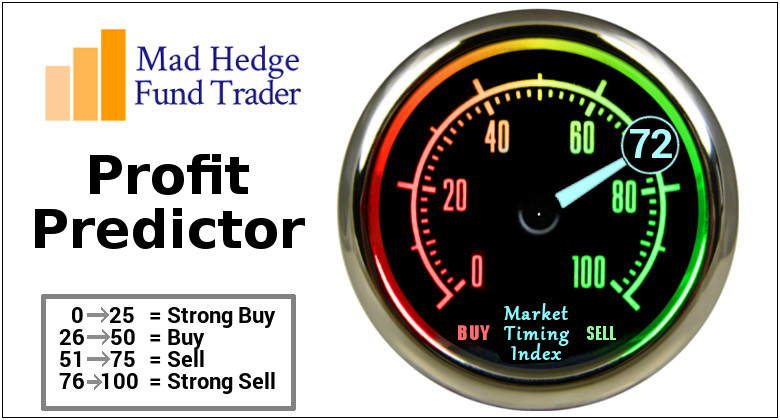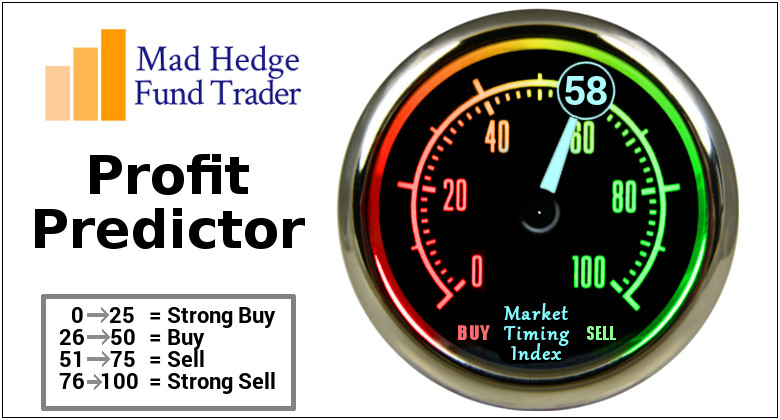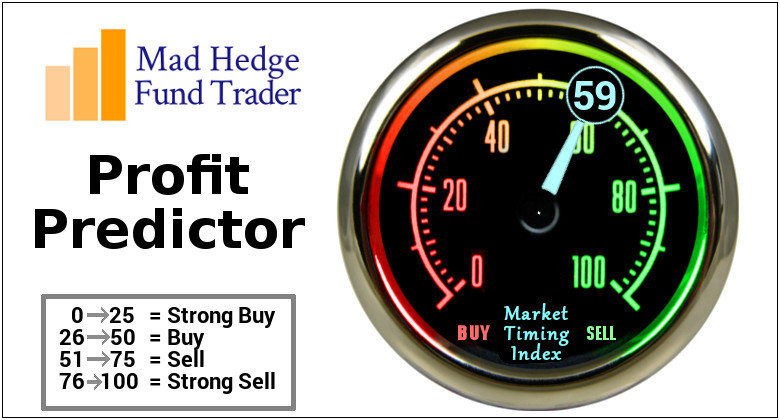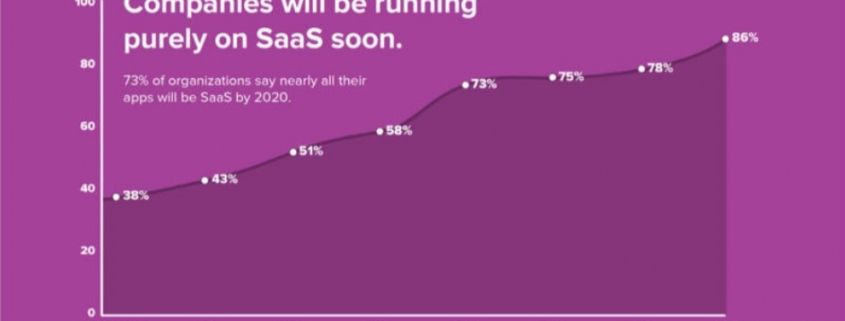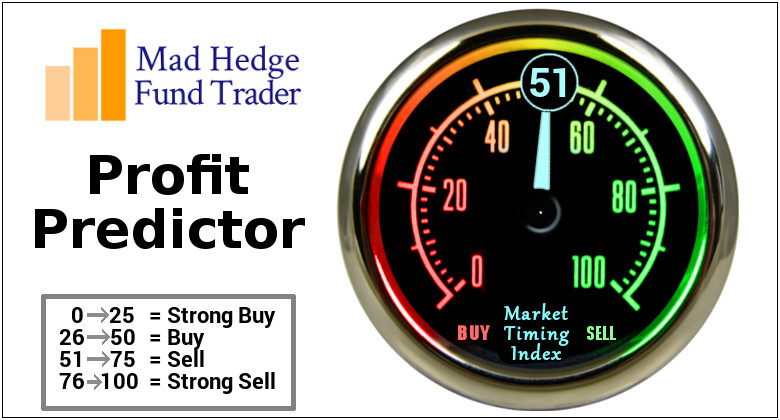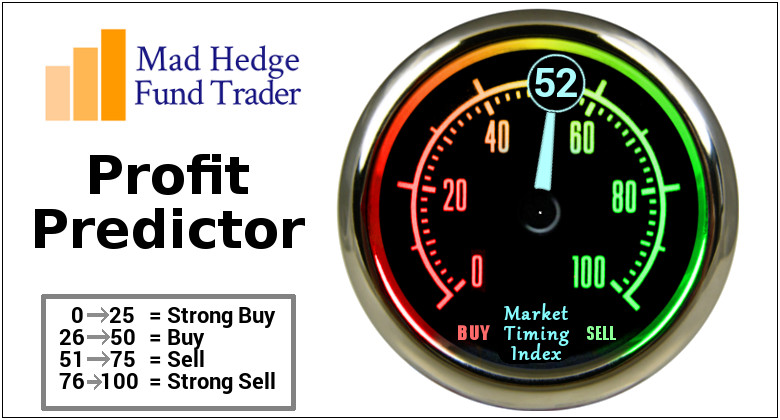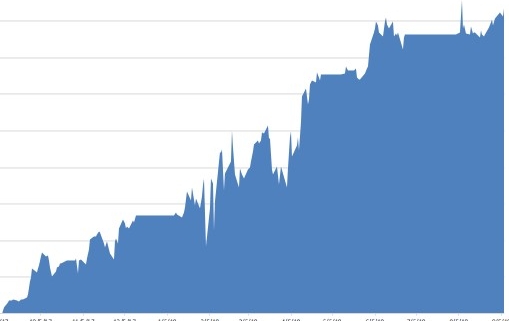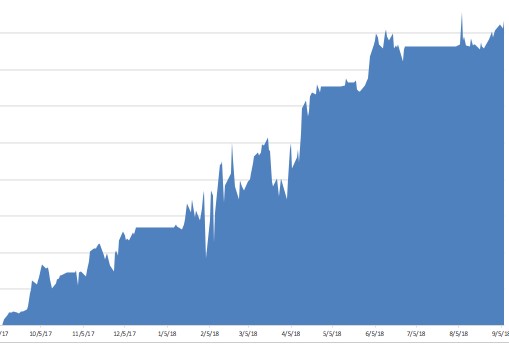In another resplendent display of corporate expertise, Amazon (AMZN) debuted its stunning new lineup of smart home products aiming to dominate your inside walls.
In total, Amazon gave consumers 15 new devices to dabble with – an unprecedented amount.
Amazon Echo, Amazon’s smart speaker, also received a software update.
Jeff Bezos’ company is traversing where they have never been before, infiltrating the car with the Echo Auto, executing location-based routines such as directing drivers running on a brand-new operating system.
Other products in the shop window were smart devices related to security, a clock, an upgraded Echo Dot, and a microwave.
The biggest nugget delivered in this release event was the advent of the Amazon Echo-on-a-chip – Amazon Connect Kit.
Essentially, it would allow any third-party manufacturer that vies for smart home supremacy to embed an Amazon produced chip into its product and design the architecture around it.
This foray has already turned heads with appliance companies already raving about this new development.
Consumer product companies such as Hamilton Beach (HBB) and Procter & Gamble (PG) are in the midst of engineering its own products centered around the Amazon connect kit.
North America sales and marketing senior vice president at Hamilton Beach Scott Tidey said his company has been “surprised at how easy it is to use the Alexa Connect Kit to prototype devices and create Alexa commands with just a few lines of code.”
In the near future, consumers could be maneuvering around their homes with products possessing a legion of these new Amazon proprietary chips.
Amazon is bent on penetrating your home and turning it into the smart home you always dreamed of, and this is one of the in-roads that will take them to the holy grail.
This hard-charging approach has been effective.
Wait to see which products go viral, then go after market share like crazy.
This approach made the Amazon Kindle a favorite of many tablet goers.
It helps that Amazon products are crafted with intense precision and great attention to detail.
As more consumers devour new Amazon devices, the synergistic effects benefit its comprehensive eco-system.
Once a customer becomes entirely drenched in Amazon products, it becomes the backbone to a customer’s existence.
Ask the millennial generation, and a good portion of them entirely depend on Amazon to fuel their daily routine.
Any replacement services would waste them hours and be a whole lot pricier.
As the voice assistants become widely adopted, it could blow a hole in Google (GOOGL) search.
Google search is still reliant on its desktop search, even though more and more people are migrating to its mobile search platform.
But if Amazon can stay ahead of Google in the voice assistant race, it could supplant Google as the premier search engine.
It might be an existential crisis for Google search and the minions of Google ad tech engineers.
Google is still wholeheartedly reliant on advertisement revenue, which is its profit engine.
Although, the cash cow digital advertisement business has made the company famously rich, regulation is a ticking time bomb, as the government has a bull’s-eye marked at this Silicon Valley mainstay.
Amazon has smartly moved up the value chain of search, and believes voice-activated search will be the revolutionary search function in the next few years.
It’s hard to argue with its prognosis.
Providing enough high-caliber accoutrements that mesh with its voice supported portfolio will expedite adoption and put strenuous pressure on Google to evolve faster.
Even worse, the golden years for digital advertisement have passed and the pressure on margins could exacerbate.
Fighting Amazon would provoke the margin bears and in one fell swoop, Alphabet, which is waiting on Waymo to take off, could get hip-checked by the Seattle-based company.
As the FANGs start to bleed over into each other’s business, these new product events take on a more important meaning.
The Amazon-effect has the tendency to destroy smaller company’s stocks, but going forward, large companies will be just as badly affected as Amazon branches off into new spheres spearheading revolutionary initiatives.
This speaks volumes to the innovation of Amazon, and why the best innovators will always stay one step ahead.
Amazon is rated the No. 1 company by the Mad Hedge Technology Letter and after this stellar debut of various IoT products, it’s hard not to like them even more.
And if Amazon’s connect kit catches fire and Google is forced to concede this hardware to Amazon, it would be a kick in the midsection to Google whose IoT strategy is not sticking as strongly as it would like.
Amazon does not want to co-exist with other companies. However, it smartly concedes certain segments until it is confident in taking that segment over.
This is why Amazon’s in-house brands are starting to wreak havoc on the third-party sellers on its e-commerce platform.
Amazon ingenuously chose to make a microwave because the technology hadn’t changed much in a generation, yet it was in dire need of simplification.
Seize the low-hanging fruit before you tackle the more difficult challenges.
Once Amazon masters the simpler devices in the home, watch out!
The rest of the home will be up for grabs too because of the same reason many companies heed way to Amazon – it does it way better than any other company for a fraction of the cost.
The multiplier effect will be in full force when Amazon finally constructs its shiny new headquarter somewhere outside of Seattle giving Amazon more manpower to fulfill Bezos’ vision.
My bet is that it will be placed smack dab in the middle of Washington D.C. – a stone’s throw away from the White House where Bezos has been increasingly active adding to his army of lobbyists.
With regulation on the verge of breaking social media’s back, Bezos is acutely aware of protecting his assets as if his life depended on it.
Bezos also has a house in Washington and owns the Washington Post.
Amazon doesn’t rest on its laurels because it doesn’t dominate 80% of the Android market, and it must be the aggressor and the disruptor at the same time.
Rolling out 15 smart products blew away the drooling audience and left them befuddled and craving for more.
Amazon must do it another way than Google and its way; the Amazon way, is the winning strategy.
It’s hard to imagine that Google is still reliant on a legacy business to print them money. And as the digital ad industry sinks, Google will sink, too.
Google still hasn’t found the next answer that can marshal it to safe waters.
Its eggs are still in one basket – unlike Amazon.
As Amazon steamrolls the little companies that never had a chance, the threat of them taking out a Google- or a Facebook-size company grows exponentially.
Ironically, Amazon’s digital ad business is set to surpass $4 billion by the end of the year, and it’s not even the main aim for Bezos.
The digital ad business is a side business for Bezos.
His visions are grander and awe-inspiring, and this product rollout affirms this vision.
This is the beginning of something much more powerful. Any investor who thinks Amazon shares are expensive is crazy.
The report of bribery in Amazon’s system and the subsequent short-term weakness in the shares is a great chance to buy Amazon on the dip because this stock is going higher.
Anybody would be a fool to short Amazon.
This company exudes quality, and many would agree with me.





